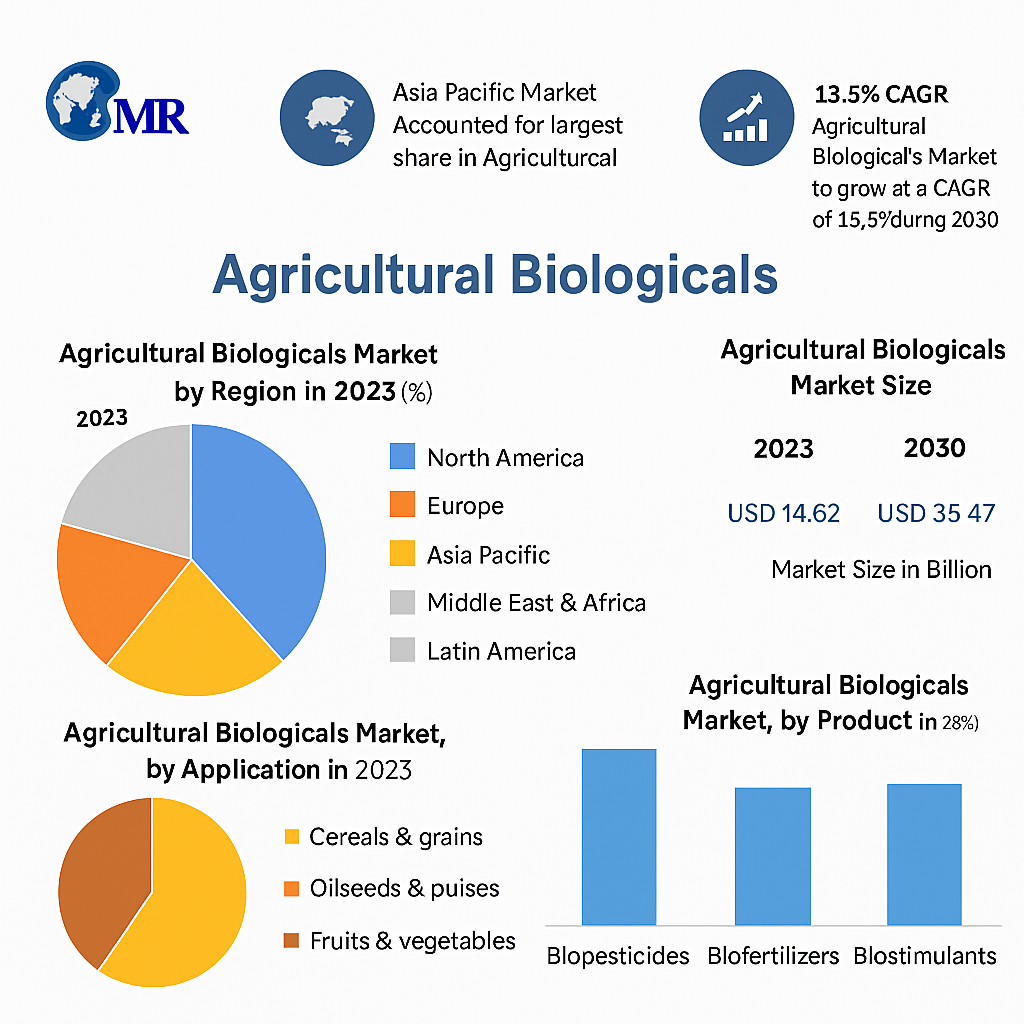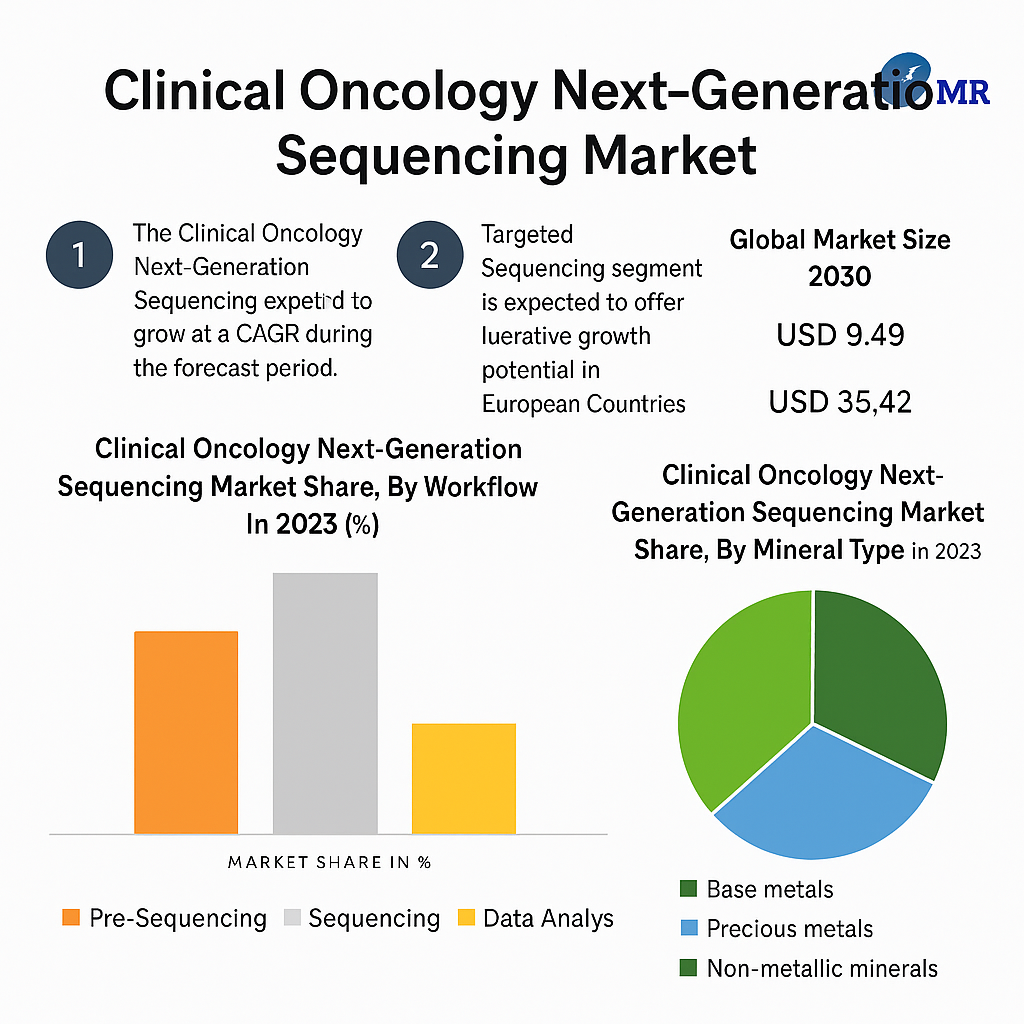The global agricultural biologicals market size is poised for significant growth, projected to expand from USD 14.62 billion in 2023 to USD 35.47 billion by 2030, registering a robust CAGR of 13.5% during the forecast period. This growth is fueled by increasing adoption of organic farming techniques and a shift towards sustainable agricultural practices.
Market Estimation & Definition
Agricultural biologicals encompass a range of products derived from natural sources, including biopesticides, biofertilizers, and biostimulants. These products are utilized to enhance crop productivity, improve soil health, and reduce dependency on chemical inputs. Their eco-friendly nature makes them integral to organic farming and sustainable agriculture initiatives.
Market Growth Drivers & Opportunities
The market’s expansion is primarily driven by:
-
Rising Demand for Organic Products: Consumers’ growing preference for organic food has led to increased adoption of organic farming practices, thereby boosting the demand for agricultural biologicals.
-
Environmental Concerns: Awareness about the adverse effects of chemical pesticides and fertilizers has prompted farmers to seek sustainable alternatives, propelling the market for biologicals.
-
Government Initiatives: Supportive policies and subsidies promoting sustainable agriculture and organic farming have further accelerated market growth.
Segmentation Analysis
The agricultural biologicals market is segmented based on product type, source, mode of application, and application:
-
By Product:
-
Biopesticides: Expected to dominate the market due to their effectiveness in pest control and minimal environmental impact.
-
Biofertilizers: Enhance soil fertility by fixing atmospheric nitrogen and solubilizing soil phosphates.
-
Biostimulants: Promote plant growth and stress tolerance.
-
-
By Source:
-
Microbials: Derived from microorganisms, widely used for their efficacy and safety.
-
Biochemicals: Include natural substances like plant extracts and organic acids.
-
-
By Mode of Application:
-
Foliar Spray: Most widely used method, allowing direct application on leaves for quick absorption.
-
Soil Treatment: Improves soil health and nutrient availability.
-
Seed Treatment: Protects seeds from pathogens and enhances germination.
-
-
By Application:
-
Cereals & Grains
-
Oilseeds & Pulses
-
Fruits & Vegetables
-
Country-Level Analysis: USA and Germany
-
USA: As a major player in the North American market, the USA has witnessed substantial growth in the adoption of agricultural biologicals. The country’s focus on sustainable farming practices and stringent regulations on chemical usage have propelled the demand for biopesticides and biofertilizers.
-
Germany: In Europe, Germany stands out with its strong emphasis on organic farming and environmental protection. The government’s support for sustainable agriculture and the presence of key market players have contributed to the country’s significant share in the agricultural biologicals market.
Competitive Analysis
The agricultural biologicals market is characterized by the presence of several key players striving for market dominance through product innovation and strategic collaborations. Notable companies include:
-
Bayer CropScience AG
-
Syngenta
-
Monsanto BioAg
-
The Dow Chemical Company
-
Marrone Bio Innovations Inc.
-
Aristo Lifescience
-
Certis USA LLC
-
Koppert B.V.
-
Valagro
-
Biolchim
-
Valent Biosciences Corporation
-
Isagro SPA
-
Novozymes A/S
-
Arysta Lifescience Limited
-
BASF SE
-
Rizobacter Argentina
-
UPL
-
Koppert Biological Systems
These companies are focusing on expanding their product portfolios, investing in R&D, and forming strategic partnerships to strengthen their market position.
To view full Report : https://www.maximizemarketresearch.com/market-report/global-agricultural-biologicals-market/31007/
The global agricultural biologicals market is on a trajectory of significant growth, driven by the increasing demand for sustainable and organic farming solutions. With supportive government policies, rising environmental awareness, and technological advancements, the market is expected to witness continued expansion. Stakeholders and investors are encouraged to capitalize on these opportunities to foster innovation and contribute to sustainable agriculture.



